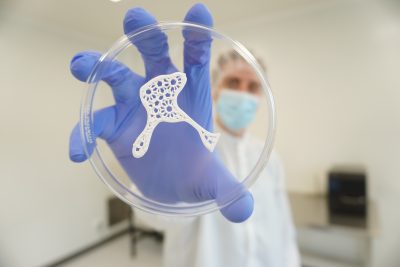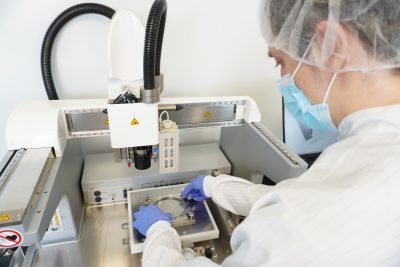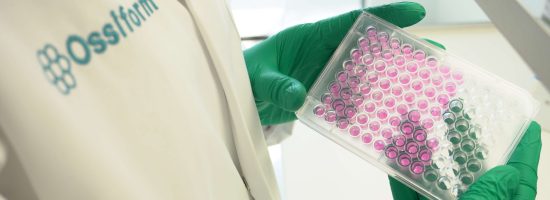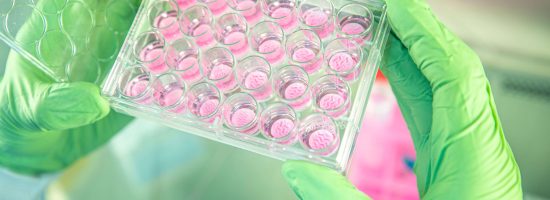What 3D printing is all about
3D printing may sound like something from a galaxy far, far away, but the technology has been around for quite some time. Throughout the years, scientists from all over the world have printed everything; from small food items to large scale houses, and in the medical industry, 3D printing is playing a key role in bettering both treatment, outcome, and overall patient satisfaction. 3D printing is providing a range of new possibilities for cost efficient production where less resources actually give you better results.
”One of the many advantages of 3D printing is that you can test your ideas quickly – and if they don’t work, you can easily change them”, explains Philip Firouzian. As 3D Printing Production Assistant at Ossiform, he is on a mission to develop and optimize their line of unique bone implants and scientific models. But in fact, it doesn’t really matter what you are printing. The technology is basically the same whether you are printing minor parts or major projects. You design the model, choose the material, and print.
 A bit of background
A bit of background
3D printing was invented in the beginning of the 1980’s, but it wasn’t until some 20 years later that the technology had its commercial breakthrough. With the turning of the new millennium, 3D printing was widely used, and it quickly rose to fame. Architects, contractors, designers, and even chefs and artists made use of this highly modern way of visualizing new ideas and creating new products. And through it all, the principal qualities of 3D printing became more and more obvious. It is not just yet another tool for mass production. It is a new way of creating personalized products that fit the consumers’ needs to a tee. And this is where Ossiform comes into the picture.
Beginning with a bachelor thesis, the two founders Casper Slots and Martin B. Jensen set their minds to create better outcomes for patients who had lost part of their bone due to severe trauma or serious illness. These types of patients often have long and difficult courses through the health care system, and the results of their reconstructive surgeries are usually far from satisfying. They experience problems with both functionality and aesthetics and these problems can stay with them long after their original disease or trauma. It is a well-known and well documented issue that has long called for new solutions.
 A new way of thinking
A new way of thinking
The idea behind Ossiform is actually quite simple. They 3D print anatomically correct bone implants that are made from natural minerals and fit the unique structures of each individual patient. But how do you even get that rock hard bone tissue into the tiny syringe that pushes the material out of the printer? Well, once you figure it out, the solution is not that far off. You just add fatty acid. In that way, you can work with the minerals to get the exact design and density you want, and when the implant is done, you can burn off the fat, leaving nothing but bare bone made just for you.
”With a patient specific bone implant you get a much better result both aesthetically and functionally. The material that we use for our implants is natural and will become real living bone tissue over time. That reduces the risk of complications, and at the same time, it is both cheap and easy to produce”, says Philip. CCO Casper elaborates, “Tricalcium phosphate is 70% of what our bones are made of. What happens with this material is that your cells will recognize it as something that they are familiar with”. And this is a key point in all the research taking place at Ossiform – achieving better outcomes while combining modern technology and natural materials.
The larger perspective
The larger perspective is hard to miss. Patients get their lives back, they regain lost function, and they can actually look in the mirror and see themselves smiling back. This has tremendous meaning on a personal level, but it also holds great benefits for the entire health care system. Patient courses are shortened as they simply need less treatment and fewer reoperations. In that aspect, Ossiform’s implants will make it possible to create accelerated programs without compromising quality.
The future is looking bright for a long line of orthopedic and craniofacial patients that can now look forward to more specialized treatments, faster healing processes, and much better results. They will, without a doubt, reap the benefits of modern technology at its best. Because 3D printing isn’t just fancy words and flying saucers in a vague and distant future. It is a way of rethinking what we know and making it work at its best today, tomorrow, and for many years to come.



